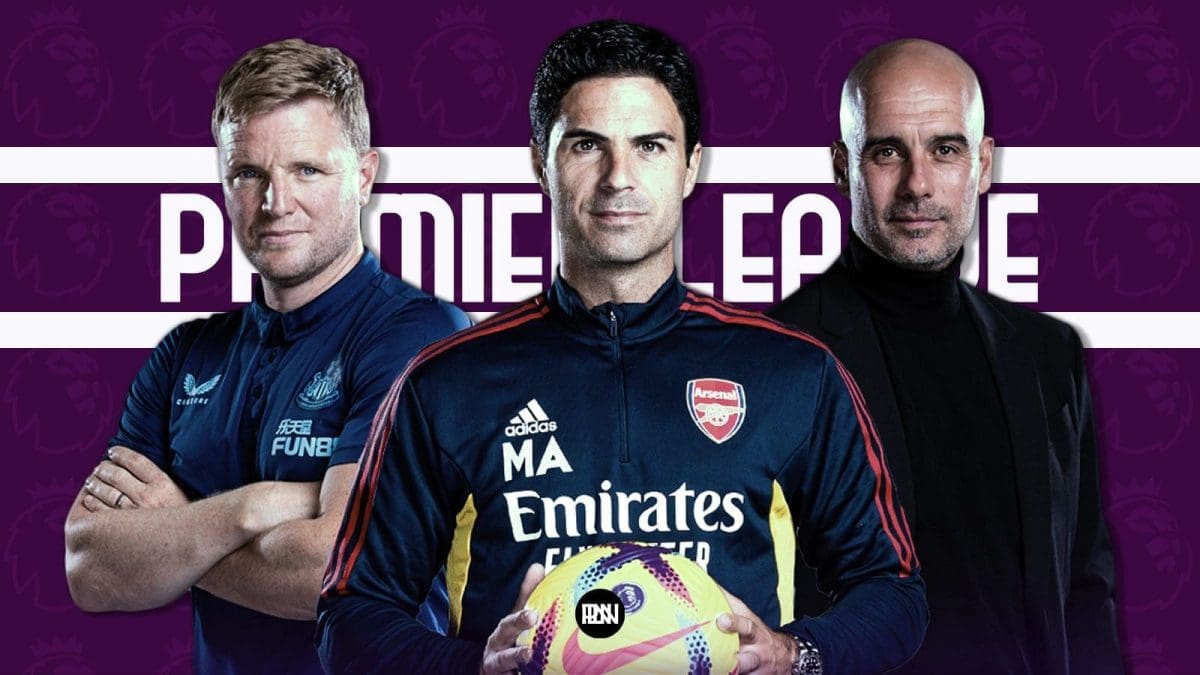Champions League winners and the 4th best team in England last season, Chelsea commenced their 2021/22 pre-season training a month ago, with the club already having played 3 friendlies (at the time of writing). While other clubs have lost one or two games in the pre-season, Chelsea have maintained a perfect record, with the Blues winning their last game 2-1 against London rivals Arsenal, in their first game of the new pre-season friendly series hosted by MIND.
These victories are a part of week-long training sessions, something that are incredibly fun, but also highly tactical. Tuchel works on a lot of things behind the scenes, evidenced by the sudden change Chelsea showed as soon as the German was appointed at the end of January.
In this year’s pre-season, Tuchel has been working hard on passing but passing with a purpose. The German employed several methods on his arrival, including playing with small footballs, holding tennis balls to avoid grappling opponents, and vertical passing by making the final third into a diamond. However, a method he employed towards the end of the last year’s campaign and something he has perfected over the pre-season is the 8v8 system.
8v8 football:
One of the newest methods employed by Thomas Tuchel in this year’s pre-season training was the 8v8 method. As the name suggests, there are eight players in both teams that consist of 1 goalkeeper, 3 defenders, 3 midfielders, and 1 striker.
Tuchel being one of the modern-day managers of this generation believes that the team should build from the back. Possession will only help a team as long as they are rotating the ball from one side to another, but with a purpose at all times. Last season, Chelsea set up in a 3-4-2-1 and found it hard at times to break down teams with a low block. Part of the reason why this happened is that certain players took too long on the ball and by the time the ball shifted to another end of the pitch, the opposition defence would settle down again.
The 8v8 method promotes quick passing and helping out your teammates in every area. For example – when in possession, the build-up starts from the goalkeeper to the defender on either side. The next pass is the crucial one. Rule No:1 in Tuchel’s books– never pass it into the center of the pitch because that is a good way to concede goals.
The next pass would either go to the defender in the center or the midfielder on the same side of the defender. What this ultimately does is that it pulls the opposition on one side of the pitch, leaving a lot of room on the other end. The 8v8 is practiced to learn how to exploit this advantage to its fullest. While there is only one striker on the pitch, the vacant midfielder on the other side of the pitch will make the main run, while the striker will take 2 defenders with him by running in between the lines.
Case in point- Chelsea’s 1-0 victory against Man City in the UCL final:
While it may not make sense theoretically, this is exactly how Chelsea scored their Champions League-winning goal. Although Manchester City were not playing a central defensive midfielder on that day, they had a lot of possession of the ball, courtesy of which, they did not particularly need a defensive midfielder on the pitch. However, what City did not count on was that Chelsea would break the lines so easily every time they got a chance.
Let us walk through Kai Havertz’s goal:
It started off with the ball being on the right-wing with Reece James, who was put under pressure, courtesy of which he turned backwards and passed the ball to Cesar Azpilicueta. This is a very important moment because this is when Chelsea had to lure City into their half, and that is exactly what they did. As soon as Azpilicueta received the ball, 3 of City’s players pushed up to press the Chelsea backline, while two central midfielders tried to mark Jorginho and Kante respectively. Azpilicueta’s only option was to either clear the ball or pass it to Edouard Mendy.
At this point, Ben Chilwell is in a relatively free position on the left-hand side, and all Mendy had to do was lob the ball towards him, which he did with pinpoint precision. Hereon in, Chelsea had City exactly where they needed them. Kyle Walker, as Chelsea would have planned it, pressed Chilwell, leaving Chelsea’s three forwards against City’s three defenders and a confused Ilkay Gundogan in the centre of the pitch.
Chilwell made a short pass towards Mason Mount, who rolled away ever so easily from John Stones and looked up to find a pass. Timo Werner executed his job brilliantly as he took Ruben Dias with him in a false run, which in turn created space for Kai Havertz, who smartly got on to the wrong side of City’s left-back in Zinchenko. Mount delivered a perfectly weighted pass to Havertz, who on his second attempt had an empty goal to shoot into.
While this was not the only time Chelsea carved City open, this shows why the 8v8 system is crucial. You always need to be available for a pass and the only long-range passes need to be diagonal passes, not sideways, courtesy of which Mount looked up instead of sideways before delivering the assist for Kai Havertz.
Rewards of the 8v8 system in pre-season games:
The 8v8 system makes sure that you know where your next pass is going to be so that one does not have to waste time on the ball. Two-touch passing and triangular passing are effective only when you trust your teammates to be in the right areas at the right time.
One of the most recent examples of success because of the 8v8 system was portrayed in Chelsea’s 2-1 victory over Arsenal. Trevoh Chalobah, who started at the back for the Blues, was one of the last players to be substituted by Tuchel. This is because the player was getting better with every touch of the ball and every pass was one step towards proving how Tuchel’s system was functioning well.
Chalobah, who played in the center of a 3-man defence, always knew where his next pass was going to be and he executed it brilliantly. Any time the youngster was put under pressure, he looked up into the area where he knew his teammate would be, and he passed the ball in that direction. The 8v8 system depends on hardwork, trust, and most importantly, precision passing between the lines. Chalobah all of those things perfectly, courtesy of which, he was one of the last men to be withdrawn by Tuchel on the day.
The reason Tuchel operates with 8 players is that he wants to make the training games so hard that it becomes relatively easier to execute the plan on the matchday. Moreover, Tuchel ensures to play these games on a pitch that is half the size of a normal pitch, to compress the area and to promote quick passing and continuous pressing.
The second method Tuchel is hoping to employ next season would be dynamism against low-block teams and athleticism against the teams that press.
Utilizing the wing-backs to the fullest:
While Tuchel has not employed this method in full force, there are some signs in the pre-season games as to how Chelsea could set up next season. The Blues, who have a plethora of forwards in their squad, could be used more effectively this season rather than warming up on the bench or staying on the sidelines.
Tuchel’s first-ever game in charge of Chelsea was against Wolverhampton Wanderers when he first set up the 3-4-2-1 formation, and he employed the likes of Ben Chilwell and Callum Hudson Odoi on the wing-backs, while Kai Havertz and Hakim Ziyech played as inside forward behind Olivier Giroud, who acted as the frontman. Callum Hudson-Odoi took full advantage of this role, and because Chelsea had a lot of possession of the ball, all Hudson Odoi had to do was stretch the game by standing out wide. The Englishman took this a notch up and started running at the full-backs and delivered brilliant crosses into the box.
However, by the end of the campaign, Reece James was preferred in the right-wing back role instead. This, however, might change in the new season. Teams that sit with a low block are harder to unlock than the ones that are continuously pressing.
In the pre-season friendly against Arsenal, Tuchel employed Pulisic in the right-wing back role while he placed Callum Hudson Odoi on the left. Given that Chelsea were going to have more of the ball, it made sense to have players like Pulisic and Hudson-Odoi in the wing-back roles. While Tuchel described this as an ‘experiment’, it is an incredibly helpful tool.
Against teams that will sit back and absorb the pressure against Chelsea, it would bode well for the Blues if they had Pulisic and Hudson-Odoi in the wing-back roles instead of Reece James and Ben Chilwell because they have the ability to beat defenders and provide service inside the box, while they could also attract a lot of attention on the wings and stretch the game. Their dynamism in the final third could be crucial to unlocking such teams, something that must have crossed Tuchel’s mind.
Similarly, against teams that are pressing Chelsea, Reece James and Ben Chilwell make sense because they provide a sensible balance between attack and defence, while both players know the right time to push up. James and Chilwell are incredible athletes, and they know how to cover the ground on both areas of the pitch while they also have the guile to defend against top teams and players, something Hudson-Odoi and Pulisic lack as out-and-out wingers.
While this system has not been employed completely, it is a method Chelsea could use to unlock specific teams.
Thus, Thomas Tuchel, who is set to commence his first full season in charge of Chelsea soon, will be aiming to incorporate the 8v8 system and utilize his wing-backs to the fullest. With Chelsea set to play their first competitive fixture against Villarreal in the Super Cup final on the 11th of August, Tuchel would be hoping to start the season off the way he ended the last one – with a trophy.
















